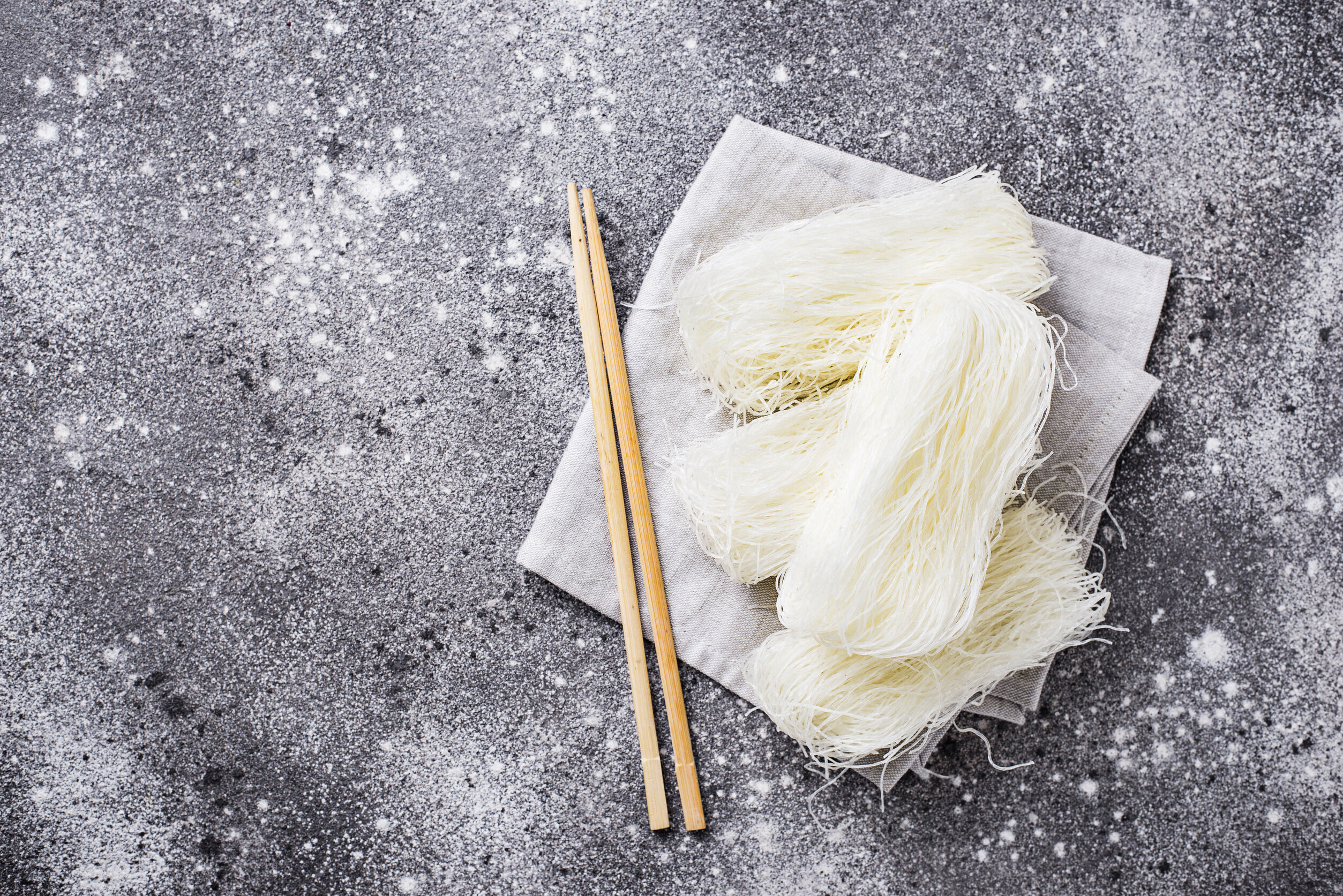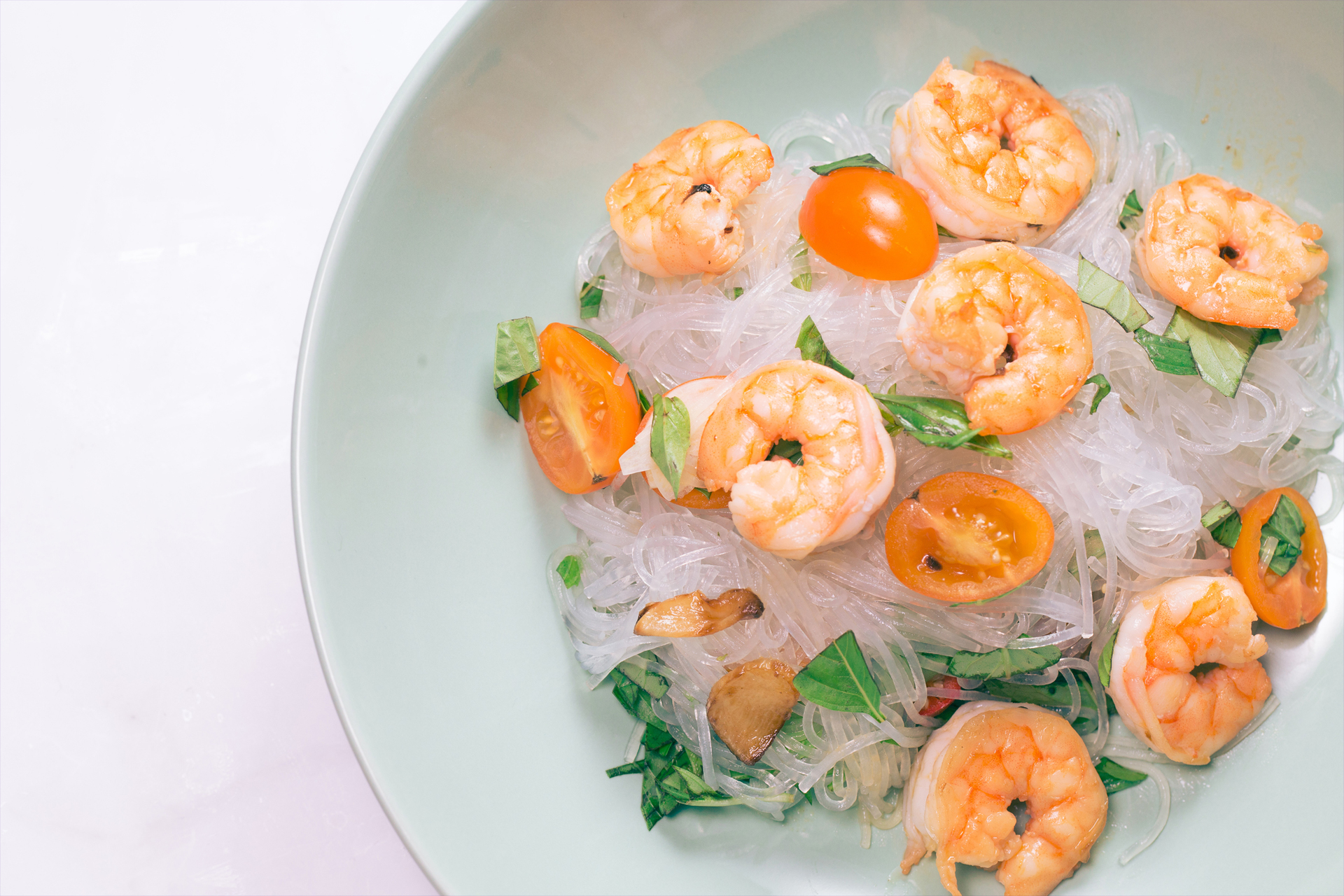Glass noodle healthy foods are becoming increasingly popular, and for good reason. These versatile noodles, made from mung bean starch, lend themselves to an array of delicious dishes while offering impressive health benefits. With their unique chewy texture and ability to absorb flavors, glass noodles can transform any meal into a culinary delight. As we dive deeper into the world of glass noodle healthy foods, you’ll discover how these transparent strands can enhance your diet and contribute to your health goals.
In this article, we’ll explore a variety of mouth-watering recipes that incorporate glass noodles, each promising to deliver both flavor and nutrition. From refreshing cold salads bursting with vibrant vegetables to hearty dishes like Thai shrimp and glass noodles, there’s something for everyone. You’ll learn how to create a delectable cold glass noodle salad that’s not only easy to make but also a feast for the eyes and body. Additionally, we’ll highlight the nutritional benefits of pairing glass noodles with ingredients like mushrooms and Chinese broccoli, showcasing how these meals can be both satisfying and health-conscious.
So whether you’re a noodle enthusiast or simply seeking healthier meal options, join us as we unlock the potential of glass noodle healthy foods. Your taste buds and your body will thank you for it!
Unpacking Glass Noodle Healthy Foods: What Are Glass Noodles?

Glass noodles, often referred to as cellophane noodles or bean thread noodles, are a nutritious staple in many Asian cuisines, particularly popular in Taiwan. These transparent noodles are crafted from mung bean starch, water, and sometimes additional starches like tapioca or potato, which contribute to their unique chewy texture. Let’s explore the essential characteristics that make glass noodle healthy foods a remarkable addition to your diet.
- Low Glycemic Index:
- Glass noodles have a low glycemic index (20-45), which means they release glucose into the bloodstream gradually. This property aids in maintaining stable blood sugar levels, making them an excellent option for those managing diabetes or watching their sugar intake.
- Nutritional Profile:
- A typical serving (190 grams or 1 cup) of glass noodles contains approximately:
- Calories: 160 kcal
- Carbohydrates: 39.3 grams
- Protein: 0.076 grams
- Fat: 0.019 grams
- Fiber: 0.9 grams
- Minerals: Phosphorus (13.3 mg) and potassium (3.8 mg)
- While they are high in carbs, they offer a satisfying energy boost without adding excessive calories, making them suitable for low-calorie diets.
- A typical serving (190 grams or 1 cup) of glass noodles contains approximately:
- Gluten-Free:
- Unlike traditional wheat-based noodles, glass noodles are gluten-free, making them a fantastic choice for individuals with celiac disease or those looking to reduce gluten in their diets. This property allows for greater digestive comfort and energy regulation.
- Versatility in Cooking:
- Glass noodles are incredibly versatile and can be incorporated into various dishes, from salads to soups. They absorb flavors well, enhancing the overall taste of your meals. Classic dishes like Phad Woon Sen and Yum Woon Sen Talay highlight their adaptability.
- Healthy Cooking Options:
- Glass noodles can be used in various health-conscious recipes. For instance, a Spicy Glass Noodle Salad combines rehydrated glass noodles with fresh vegetables like bell peppers and carrots, lean proteins such as grilled chicken, and a zesty dressing. This dish is not only visually appealing but also low in calories and high in nutrients.
- Market Trends and Demand:
- As health awareness rises, there’s a growing demand for healthier noodle alternatives. Glass noodles, with their low glycemic load and gluten-free nature, are becoming increasingly popular among health-conscious consumers. They provide an excellent base for a range of dishes while addressing dietary restrictions.
In summary, glass noodles are a healthy food choice that combines low glycemic qualities, essential nutrients, and culinary versatility. Their growing popularity in Taiwan reflects a shift towards more health-conscious dining options, making them a valuable addition to any diet. Whether you are enjoying a hearty glass noodle soup or a refreshing summer salad, these noodles can enhance your meals while supporting your health goals.
Creating a Delectable Cold Glass Noodle Salad
Cold glass noodle salads are not only refreshing but also packed with nutrients, making them an excellent addition to any healthy diet. Here’s how to whip up a delicious and healthy cold glass noodle salad that speaks to the vibrant flavors of Taiwanese cuisine.
Ingredients
- Glass Noodles
- 200 grams of rehydrated glass noodles (mung bean starch is preferred for its low glycemic index)
- Fresh Vegetables
- 50 grams of julienned bell peppers
- 50 grams of julienned carrots
- 50 grams of julienned cucumbers
- A handful of fresh cilantro and mint for garnish
- Protein (optional)
- 150 grams of thinly sliced grilled chicken breast or tofu for plant-based options
- Dressing
- 2 tablespoons of fish sauce (or soy sauce for a vegetarian option)
- 2 tablespoons of lime juice
- 1 tablespoon of soy sauce
- 1 teaspoon of sugar
- 1 finely chopped Thai chili (adjust to taste for spice)
Instructions
- Prepare the Noodles
- Soak the glass noodles in warm water for about 30 minutes until they become soft and pliable. Drain and set aside.
- Prep the Vegetables
- While the noodles are soaking, wash and julienne the bell peppers, carrots, and cucumbers. This adds color and crunch to your salad.
- Make the Dressing
- In a bowl, whisk together the fish sauce, lime juice, soy sauce, sugar, and chopped Thai chili. Adjust the seasoning according to your preference, ensuring it has a balance of salty, sweet, and sour.
- Combine Ingredients
- In a large mixing bowl, toss the drained glass noodles, prepared vegetables, and protein (if using). Pour the dressing over the top and mix thoroughly.
- Garnish and Serve
- Garnish the salad with fresh cilantro and mint leaves for an aromatic finish. You can serve the salad immediately or refrigerate it for a couple of hours to let the flavors meld together.
Nutritional Benefits
|
Component |
Nutritional Value |
|
Calories |
160 kcal (per cup of glass noodles) |
|
Carbohydrates |
39.3 grams (provides energy) |
|
Protein |
0.076 grams (add grilled chicken for more) |
|
Fat |
0.019 grams |
|
Fiber |
Low but promotes intestinal regularity |
|
Potassium |
3.8 mg (good for heart health) |
|
Phosphorus |
13.3 mg (important for bone health) |
Comparison: Glass Noodles vs. Traditional Noodles
|
Feature |
Glass Noodles |
Traditional Wheat Noodles |
|
Glycemic Index |
Low (helps regulate blood sugar) |
High (can spike blood sugar) |
|
Gluten-Free |
Yes |
No |
|
Calories |
Lower in calories |
Higher in calories |
|
Texture |
Chewy and absorbs sauce well |
Firm but can be mushy |
This cold glass noodle salad is not only visually appealing with its vibrant colors, but it’s also a quick and healthy option for lunch or dinner. It’s perfect for those busy days when you want something light yet satisfying. Enjoy the crunch of fresh vegetables paired with the unique texture of glass noodles, all while knowing you’re making a nutritious choice!
Thai Shrimp and Glass Noodles: Health in Every Bite
The combination of Thai shrimp and glass noodles isn’t just a culinary delight; it’s a powerhouse of nutrition packed into a single dish. The unique properties of both ingredients contribute to a meal that supports various dietary needs while satisfying your taste buds.
1. Nutritional Benefits of Shrimp
- High in Protein: Shrimp is an excellent source of lean protein, which is essential for muscle repair and growth. A typical serving of shrimp (about 85 grams) provides around 20 grams of protein.
- Low in Calories and Fat: This seafood option is low in calories, making it ideal for those watching their weight. An average serving contains only 84 calories and less than 1 gram of fat, allowing you to indulge without guilt.
- Rich in Omega-3 Fatty Acids: These essential fats are crucial for heart health and can help lower bad cholesterol levels. Including shrimp in your diet can contribute to better cardiovascular health.
2. The Health Benefits of Glass Noodles
- Low Glycemic Index: Glass noodles, made from mung bean starch, have a glycemic index ranging from 20 to 45. This feature makes them a suitable choice for those managing diabetes as they help regulate blood sugar levels.
- Gluten-Free: Unlike many traditional noodles, glass noodles are completely gluten-free, making them a safe alternative for individuals with celiac disease or gluten sensitivities.
- High Fiber Content: The combination of glass noodles with vegetables adds dietary fiber, which is essential for digestive health. Fiber helps keep you full and satisfied, which can help curb overeating.
3. A Flavorful Fusion
- Thai Flavors: The dish often incorporates classic Thai aromatics such as garlic, ginger, and lemongrass, which not only enhance the flavor but also provide additional health benefits, including anti-inflammatory properties.
- Versatile and Adaptable: This dish can easily accommodate a variety of vegetables, such as bell peppers, carrots, and bok choy, increasing its nutritional value and making it visually appealing.
4. Example Dish: Goong Ob Woonsen
One popular way to enjoy this combination is through the Thai dish “Goong Ob Woonsen,” a baked shrimp and glass noodle dish that showcases the best of both ingredients. Here’s how you can create your own version:
- Ingredients:
- 200 grams of glass noodles, soaked and drained
- 150 grams of fresh shrimp, peeled and deveined
- 100 grams of sliced mushrooms
- 2 cloves of garlic, minced
- 1 tablespoon of soy sauce
- 1 tablespoon of fish sauce
- A handful of fresh cilantro for garnish
- Instructions:
- Preheat the oven to 180°C (350°F).
- In a large bowl, combine the soaked glass noodles, shrimp, mushrooms, and garlic.
- Add the soy sauce and fish sauce, mixing well to incorporate.
- Transfer the mixture to an oven-safe dish and bake for about 15-20 minutes, until the shrimp are cooked through and the noodles have absorbed the flavors.
- Garnish with fresh cilantro before serving.
5. Comparative Table of Nutritional Benefits
|
Ingredient |
Calories (per 100g) |
Protein (g) |
Fat (g) |
Glycemic Index |
Gluten-Free |
|
Shrimp |
84 |
20 |
0.5 |
N/A |
Yes |
|
Glass Noodles |
160 |
0 |
0 |
20-45 |
Yes |
|
Traditional Noodles |
350 |
12 |
2 |
50+ |
No |
In conclusion, the pairing of Thai shrimp and glass noodles in a single dish not only delivers on flavor but also maximizes health benefits, making it a fantastic addition to any diet. Whether you’re looking to enjoy a light meal or simply want to indulge in something delicious, this combo is worth adding to your recipe rotation. Give it a try today!
The Benefits of Glass Noodles with Mushrooms and Chinese Broccoli
Glass noodles, often made from mung bean starch, are not only versatile but also packed with health benefits, especially when combined with mushrooms and Chinese broccoli. Here’s a closer look at why this pairing is a great addition to your diet.
1. Low-Calorie Alternative
- Calorie Count: A single cup of glass noodles contains about 160 kcal. This makes them an excellent option for those aiming to manage their calorie intake while still enjoying a satisfying meal.
- Comparison to Traditional Noodles: For instance, traditional wheat noodles can contain over 200 kcal per serving, making glass noodles a more weight-friendly choice.
2. Nutritional Benefits
- Carbohydrate Source: Each serving of glass noodles provides approximately 39.3 grams of carbohydrates, offering a good energy source without the high glycemic impact. This helps in stabilizing blood sugar levels, making it suitable for those with diabetes.
- Fiber Content: While glass noodles have a lower fiber content of about 0.9 grams per serving, pairing them with fiber-rich ingredients like mushrooms and Chinese broccoli can enhance digestive health.
|
Nutritional Component |
Glass Noodles (1 cup) |
Traditional Wheat Noodles (1 cup) |
|
Calories |
160 kcal |
200 kcal |
|
Carbohydrates |
39.3 g |
42 g |
|
Fiber |
0.9 g |
2.2 g |
3. Gluten-Free Goodness
- Ideal for Gluten Sensitivity: Glass noodles are completely gluten-free, making them a safe alternative for individuals with celiac disease or gluten intolerance. This is a significant advantage over traditional wheat-based pasta.
- Comparison with Rice Noodles: Unlike rice noodles which may have trace gluten due to cross-contamination, glass noodles provide a secure option without any gluten-related concerns.
4. Health Benefits of Mushrooms
- Rich in Nutrients: Incorporating mushrooms, such as shiitake or enoki, adds essential nutrients like vitamin D, selenium, and B vitamins.
- Immune Support: Mushrooms are known for their immune-boosting properties, which can be particularly beneficial during the colder months.
5. Benefits of Chinese Broccoli
- High in Vitamins and Minerals: Chinese broccoli is an excellent source of vitamins A, C, and K, as well as calcium and iron, promoting overall health.
- Bone Health: The combination of glass noodles, mushrooms, and Chinese broccoli ensures a nutritious profile that supports bone health.
6. Practical Cooking Tips
- Versatile Recipe: Try a simple stir-fry using 7 ounces of glass noodles, 14-16 ounces of your favorite mushrooms, and 8 ounces of Chinese broccoli. The process is straightforward and can be customized with various sauces.
- Soak and Prep: Soak the noodles for at least 30 minutes before cooking to achieve the perfect texture. This prep can be done in advance, making your meal preparation quick and easy.
Conclusion
Incorporating glass noodles with mushrooms and Chinese broccoli into your diet not only enhances the flavor of your meals but also contributes to a balanced, health-conscious lifestyle. With their low-calorie content, gluten-free status, and rich nutritional profile, this combination is a delicious way to nourish your body while enjoying delightful dishes.
In conclusion, glass noodle healthy foods offer a remarkable blend of nutrition, versatility, and culinary delight. From understanding the basics of glass noodles—such as their low glycemic index and gluten-free nature—to creating delicious dishes like refreshing cold salads and savory Thai shrimp combinations, it’s clear that these noodles can elevate your meals while supporting your health goals.
The delightful inclusion of nutrient-dense ingredients, such as fresh vegetables and protein sources, further enhances the health benefits. For instance, adding mushrooms and Chinese broccoli not only boosts the dish’s flavor but also enriches its nutritional profile, supporting digestive health and providing essential vitamins and minerals.
As you explore various recipes and experiment with glass noodle dishes, remember the ease of preparation and the ability to cater to your taste preferences, whether you’re in the mood for a light salad or a hearty main course. Embracing glass noodles as part of your diet can lead you toward healthier eating habits without sacrificing taste or satisfaction.
Now is the perfect time to incorporate glass noodles into your meals. Try out these recipes, share your experiences, and discover how these nutritious noodles can be a delightful addition to your culinary repertoire. Originating from Asia, glass noodles carry a culinary heritage that adds authentic flavor and texture to modern dishes. Adding glass noodles to your meals provides a nutritious and versatile option for health-conscious cooks. Thanks to their low glycemic index and gluten-free properties, they fit perfectly into balanced diets and can be enjoyed in a variety of dishes—from light salads to hearty stir-fries.

